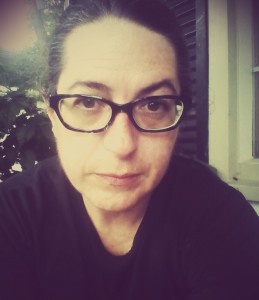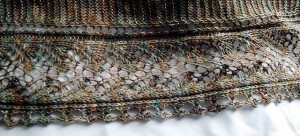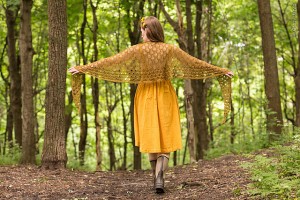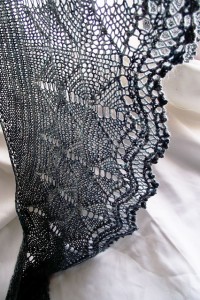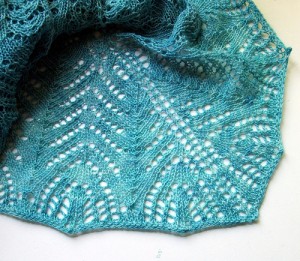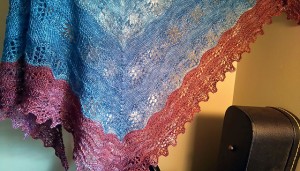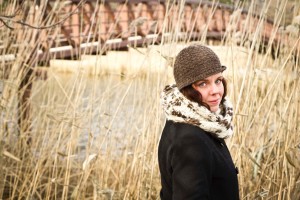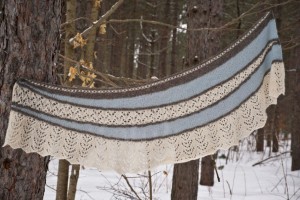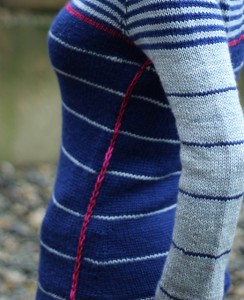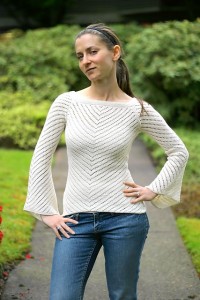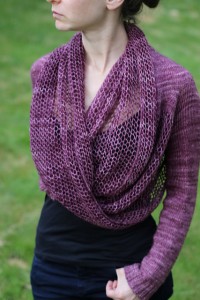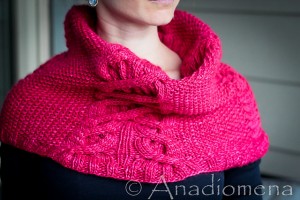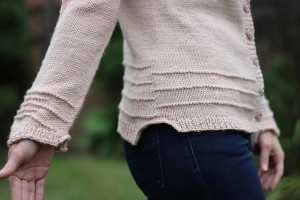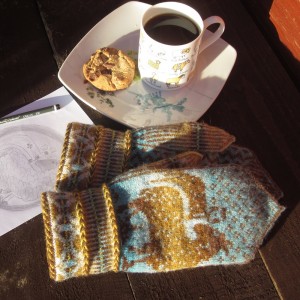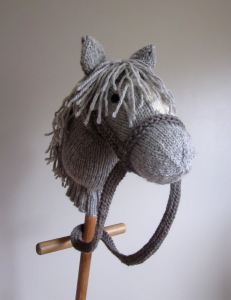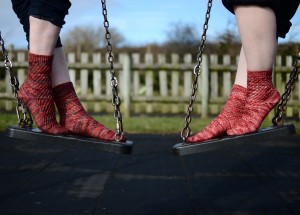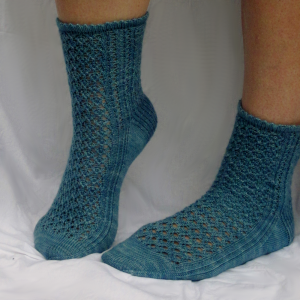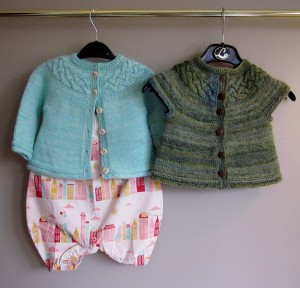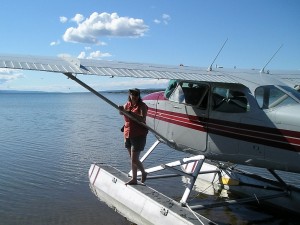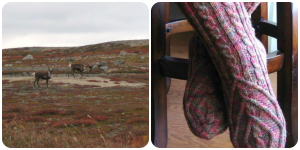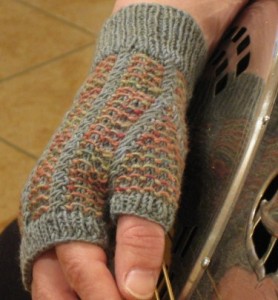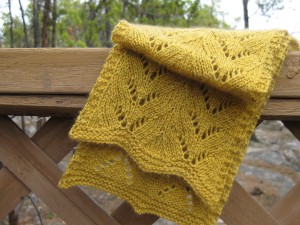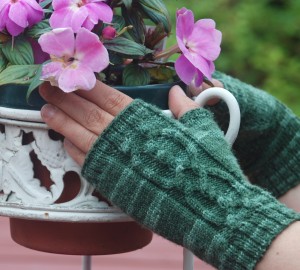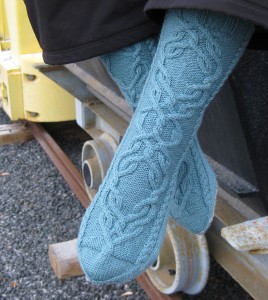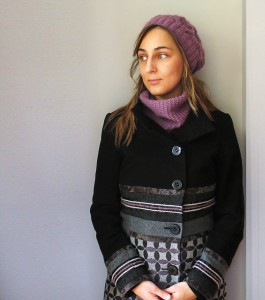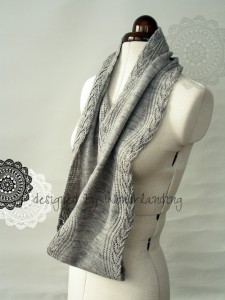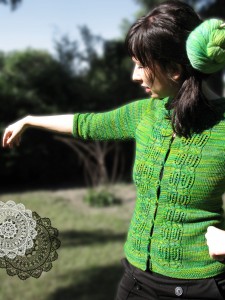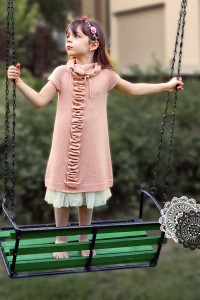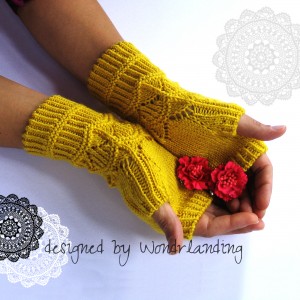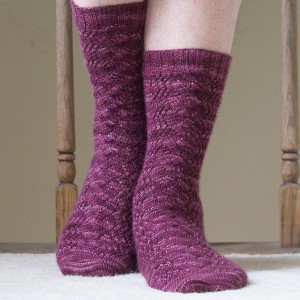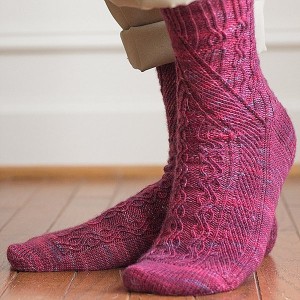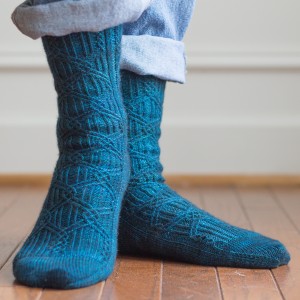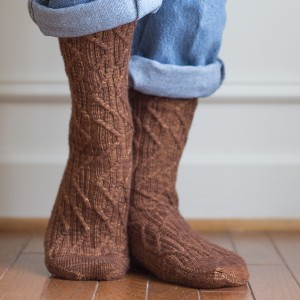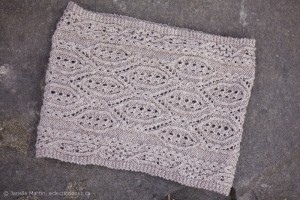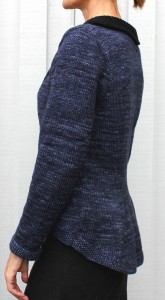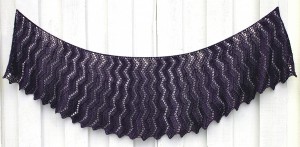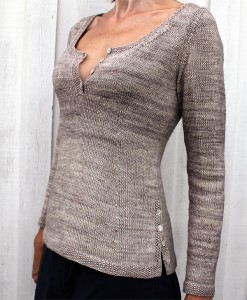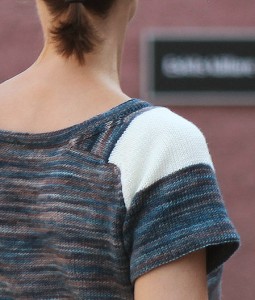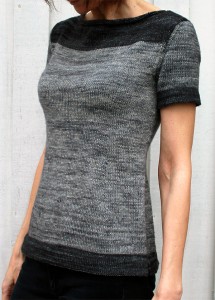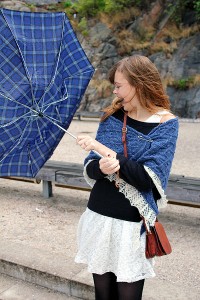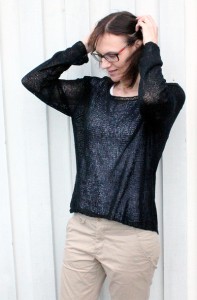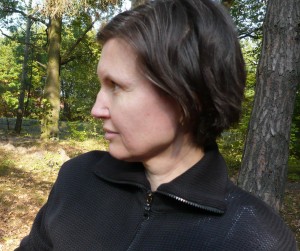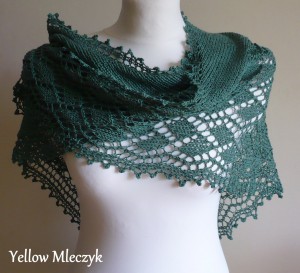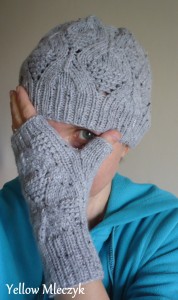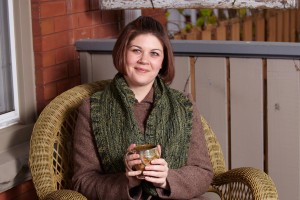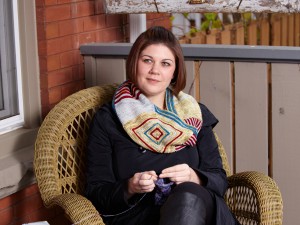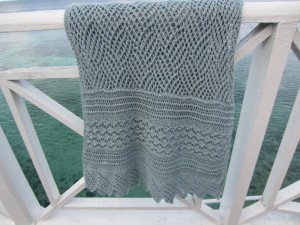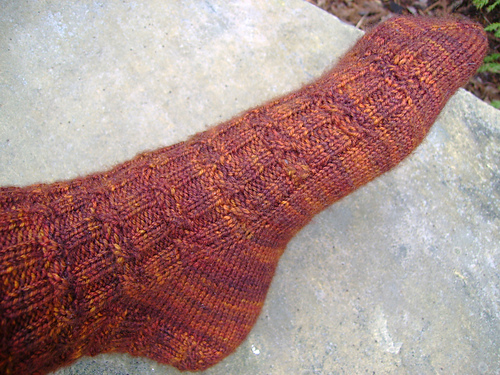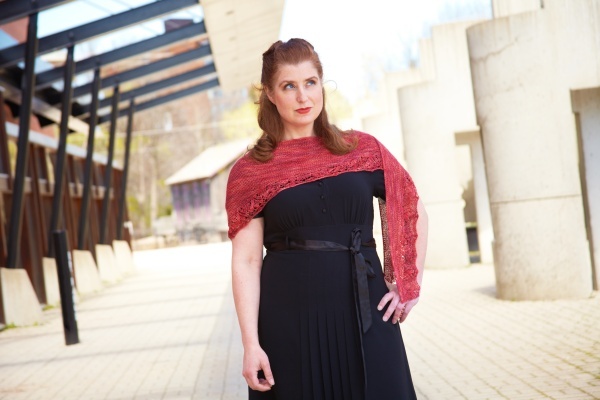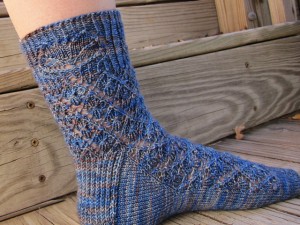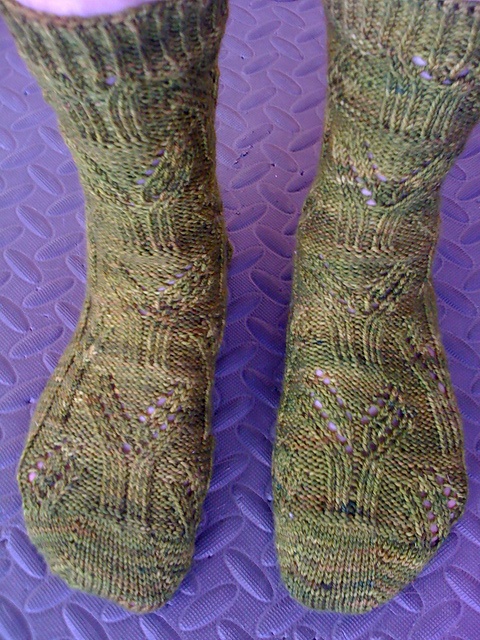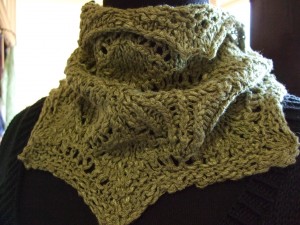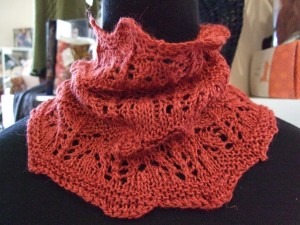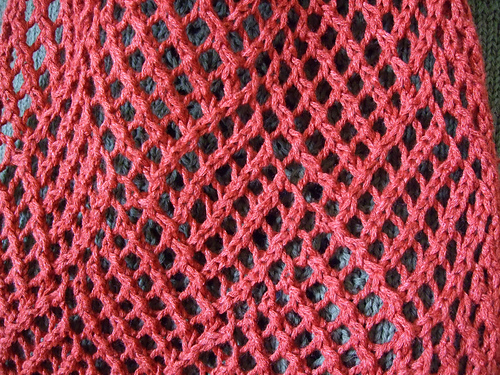Interview: Lori Law
After a week off to catch my breath – and catch up on some pattern writing – I’m back to finish up this year’s interview series. First up is Canadian designer Lori Law of Oceanwind Knits.
Who taught you to knit/How did you learn to knit?
I was taught to knit about the age of 5 or 6 by my mother, assisted by my paternal grandmother, because I was being a ‘pain’ while there was quilting going on (a stretched quilt in progress was a perpetual fixture in grandmother’s living room) which I was not allowed to partake in (very often… occasionally, my grandmother would allow me to ‘quilt’ and would take out the long loopy threads after I was shooed off to bed). I wanted to be doing something crafty and ‘make something’. I pretty much grew tired of the garter-stitch scarf idea fairly quickly. It was rather frustrating for my mom since I couldn’t yet read so finding written patterns for me to work with was out of the question. I wound up leaving it for a few years, but by high-school I was knitting sweaters. Neither my mother or my grandmother lived to see my published designs; I often wonder what they would think of them.
How did you get started designing?
I have been noodling in knit design for as long as I can remember, especially when I was younger and yarn was much harder to find (especially around rural Ontario) than it is nowadays. I would rewrite existing patterns in different gauges to suit whatever yarn I had around which taught me a lot about the basic elements that go into designing. I began to seriously develop and publish patterns about 12 years ago when I started fussing around with yarn dyeing. The two were inter-mingled. I would have ideas for a knitting design but instead of sourcing yarn, I decided to develop my own yarns. For a while before dyeing I designed felted bags, when Cascade 220 first came to Canada. Since I started dyeing I’ve worked mostly in fingering yarns. That started around the time the whole sock-knitting craze hit.
What inspires your designs?
It’s hard to say. Sometimes I just see a lace stitch pattern in one of my stitch pattern books and it talks to me. Or an idea floats into my head. Sometimes I have a particular itch for a certain something and I will go rooting through books to find a stitch pattern to start with and it just grows from there. It’s not always written in stone… there are times something will morph into something very different from its origins after manipulating stitch patterns and playing with the yarn I want to use. In the end, a lot of my work winds up reminding me of something in nature, or something conceptual or something poetic. I have a hard time describing my designs because a lot of the time they are kind of extraneous bits of stuff from my psyche which get translated into lace or cables which eventually wind up ‘feeling’ like such and such but the end result might not have been the initial inspiration; things sort of evolve as I work.
Which comes first – the yarn or the inspiration?
Depends on what I am working on. If, for example, I have a new yarn I’m developing which I want to highlight (and play with), the yarn will be the starting point. Sometimes things don’t gel so there will be a series of fits and starts and I might wind up changing yarns. But I like to work in yarns which are interchangeable with other yarns… mostly I wind up working in laceweight or fingering weight. So even if I’m working on something for a particular yarn of mine, it will more than likely work in a lot of other yarns as well. There is such an array of yarns available these days. Other times, I have an idea and I will dye up a yarn or a set of yarns specifically for it. I am trying to push myself to work more in heavier yarns. I’m working on sweater designs lately, which I prefer in sport weight or worsted, which is a nice switch from the lighter yarns.
What characteristics do you try to incorporate in your designs?
I tend to be drawn to developing concepts which flow along but tend to have a little dramatic flare here and there. I’m not likely to fill an area of a shawl with an ‘all-over’ stitch pattern, for example. I tend to want to have a highlight of sorts whether it be a striking edging or a recognizable motif in the lace pattern. Something the eye will pick up on. I also tend to hopefully mingle a combination of traditional elements in a modern format, but also have a relatively timeless quality in my pieces. I like to knit things with those sorts of elements, myself (when I actually get around to personal knitting, which isn’t often – currently I’m working on STRÅLE, by Bristol Ivy, between designing and dyeing and weaving projects, which I find to be a brilliant design all around and something I can wear a for a good number of years, or perhaps I should say ‘for years once I am finally finished’. LOL – my track record for finishing personal knitting projects is fairly pathetic. I have a lot of UFOs). So when I put together a design I hope the knitter will feel it’s still fun to wear years after it’s completed.
What is your favourite type of item to design?
I tend to lean towards shawls and smaller items (although I find cowls much trickier to put together than one would imagine), scarves, mitts, socks. For the last few years I’ve been on a bit of a shawl bender. But, I also really like to plunk all the elements for a sweater design into the spreadsheet and spend an afternoon tackling all the details, making sure the measurements and numbers jive and working out decrease schedules and fitting in stitch pattern requirements for different sizes (I have wondered if there is some sort of name for this, if it’s a bit of an affliction LOL). I find this surprising because I’m not really a ‘math’ person, but I like what math can do in terms of having all the required blocks click into place. I like being able to trust the formulas to give me the required numbers. I do a fair amount of tech editing for other designers because I enjoy the numbers process (I should get around to posting a tech editing section on my website, but I never seem to get it posted). I honestly don’t think I would enjoy designing as much as I do if there were not spreadsheets included in the process. I always have several on the go on my desktop.
Tell me about “Creissants”, what is the story behind this collection?
Creissants started several years ago as a way to motivate my working strategy. I hadn’t really lost my mojo, so to speak, but I was struggling with a lot of things and I needed a way to focus which would also motivate. So I settled on crescent-shaped shawls, which was a new element for me to work in at the time. It’s taken a lot longer to complete the collection than I anticipated it would, with other designs popping up as well, but I’m nearing the finish line on the final design – about 6 more rows to go. I’ve really enjoyed putting together a collection. I set it up so I would have boundaries to work in, because sometimes, when I’m at loose ends as I was back then, I tend to get distracted easily and flounder around trying this and that which can be therapeutic but not all that productive. I wanted to be productive. It has helped to get me publishing more regularly than I was for a while.
Do you have an aspirational knit – a complicated/challenging design that you want to knit “some day” when you feel ready?
I have aspired to the work of so many great knitters over the years. I came across Starmore early (in the ’90s) but have never knit one of her designs. There have been a lot of different works I’ve been inspired by or sighed over, especially as more and more historical and current knitting have become available on the Internet. For years I was influenced by whatever I found in knitting books at the library or by knitting magazines. The intricate traditions which today’s knitting builds on push us to try new techniques and keep us growing as knitters and designers. I don’t really have a particular knit in mind when I think about an aspirational knit, so to speak, but I do have the Haapsalu Shawl book and someday I would like to knit Greta Garbo out of that book in Estonian laceweight wool (which I have here waiting patiently for me). The question is, always, ‘when’? Someday. 🙂
What is coming next? What’s in your release queue?
Well, as I mentioned, I am nearing the finish line on the last design of Creissants (which I am really excited about, it’s going to be a bit of a showpiece to finish off the collection). That will be published before the end of the year. I’m looking at a re-release of a new version of Oyster Bay, which was my first shawl design, because Oceanwind Knits is 10 this year (as of November 2015). I have a sock design nearly finished up. And, I’m working on several sweater designs which I hope to have available over the winter. I’m also thinking for my next ‘collection’ of designs, I might work on a series of infinity cowls.
Your desert island yarn? (if you could only knit with one yarn from now on which would it be?)
That is a TOUGH question. So long as it wasn’t scratchy and was either wool or silk or a combo of one or the other, I’d probably be ok. But if someone came and took all the fingering weight merino out of my house right now, I would be pretty lost, even with the other yarns that would be left.
Which is your most under-appreciated design?
Cintamani Socks. Strangely. (Or not?). I’m not sure why, but it’s not nearly as popular as my other sock designs or any of my designs.
What’s the one piece of advice you’d like to share with other knitters?
If you come across something you don’t know how to do and wish you knew how to do, learn how to do it. The resources to learn new techniques out there today are stellar, unprecedented.
Any knitting/designing New Year’s resolutions?
My main goal every year is to keep going forward, to be creative, productive and progressive. (And, possibly, I will tackle some of those UFOs :D).
If you could have dinner with one knitting designer (living or dead) who would it be and why?
I met Kaffe Fassett years ago, sometime around 1995. I was actually working on a vest design of his at the time. It was a brief meeting, he was in a booth at what is now the Creative Live (?) show in Toronto, I forget what it was called back then. I just love his use of colour, how brazen it is. It wasn’t all that busy (it was mostly booths for quilters back then, not too many knitters were about) so we got to talking. He said the reason people get so frustrated with knitting, especially intarsia, is because people are so resentful about finishing and darning in their ends; they forget to enjoy the process which is the whole reason for bothering to knit something in the first place, that knitters seriously need to relax; just pull out a length of yarn instead of fussing with bobbins, knit as long as you can with it, pull out another length of yarn…. and he showed me how to knit in my ends as I worked. I’ve never forgotten that meeting, I’ve heard his words in my head often over the years. I would love to meet him again sometime.
—
View all of Lori’s patterns here. All photos copyright Lori Law, except for Knothole, which is credited to Twist Collective/Chrissy Jarvis. All images used by permission.
You can find Lori on the following social media sites:
What is the Gift-A-Long? The GAL is a big knitting and crochet designer promotion with prizes and more than 5,000 people participating in a giant KAL/CAL. Come join the GAL group on Ravelry!
